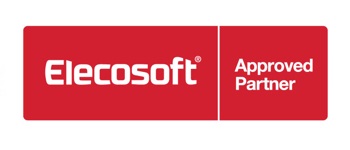Why Finding the Best Construction Software Solutions Comes from Finding the Right Construction Technology Partner
Today’s construction is increasingly supported by technology – from the initial design and budget to project scheduling, site management and more.
Trusting the right construction technology partner for your business is just as important as identifying the best construction software solutions.
Large, medium, and even many smaller firms in construction and adjacent markets such as engineering and manufacturing have already adopted a range of construction technologies to improve efficiency, provide better visibility for managers, and boost overall profitability.
Others are still seeking the best construction software solutions that can shape around their specific needs.
Making smart software choices today means much more than simply looking for product features and seeking to improve operational efficiency.
In a world where long-term sustainability and management are a key part of planning the built environment, it is important that information flows freely beyond design and build, through fitout and towards long-term maintenance and asset management too.
Seek out the Best Construction Technology Partner, not just the Right Product
The broad range of available software solutions for different purposes and stages can make the software selection process daunting.
But there are some cues that can help the would-be technology purchaser know they’re making the right choice.
Today’s selection criteria must go beyond features, pricing and licensing and look towards whether a supportive long-term relationship is possible.
One of the most important indicators is the responsiveness of the technology vendor after the sale – both in terms of customer support and future development.
Evidence is mounting that customer experience is a strong competitive differentiator, and it is now a high priority for more than 70% of companies.
Elecosoft believes in customer satisfaction, with a product development process that has closely tracked changing construction customer needs for decades.
It regularly solicits feedback from customers – at user conferences, user advisory panels, and through everyday discussions – to ensure that its products and services remain aligned to the industry.
As a result, many Elecosoft customers like Bouygues and Woodbase have found Elecosoft to be a perfect construction technology partner.
They been using its software solutions, such as Powerproject, for many years.
“We prefer Powerproject on the client side at Bouygues UK because it’s very quick and easy to knock out a simple programme rapidly. We can make a quick programme that has almost all the logic, certainly enough for client reporting purposes, to submit, then we can play with it later. The main advantage is the sheer rapidity with which you can create a programme.”
»» David Izaguirre,
Senior Planning Manager,
Bouygues
The Best Construction Software is Customer-Driven
Beyond meeting the usual requirements for critical features and competitive pricing criteria, the best construction software is usually customer-driven – meaning it was purpose built for this industry and its typical user types.
It is also regularly updated based on input from those users.
This ensures that the software works the way the users need it to and can grow with the company.
This was confirmed by construction company Willmott Dixon’s National Planning Manager Paul Hoskins.
The company formerly used Microsoft Project, before moving over to Powerproject as its standard a few years ago.
Evolving to Meet Evolving Construction Software Needs
Construction and engineering both have unique sets of challenges.
Software developers must have a clear understanding of where the industry is headed, and which new features will actually be most helpful.
This has led in recent years to significant re-orientation of project planning software around BIM, including the evolution of the 4D planning capability within Powerproject’s BIM module.
It has seen 3D visualisation become integral to design software for everything from interiors to staircase design, and necessitated integration with emerging standards in ERP and other business systems.
Meanwhile 4D planning, which enables builders to track progress visually over time, is slowly moving to the mainstream.
It is worth remembering that just because something is technically possible, it doesn’t always mean it is helpful to end users.
Elecosoft has often found that it is the small features that are most valued – such as a one-click reschedule button, or the ability to jump up and down a long, complex schedule of thousands of activity lines, for construction planners.
These and other features, like drag-and-drop schedule building and the ability to cut-and-paste from Excel, were direct requests from Powerproject customers.
But this responsiveness extends across the portfolio too.
Easy ways for designers to show customers a visualisation of their timber-framed home or envision a complex staircase have become integral to our Framing and Staircon solutions, respectively.
At companies like Elecosoft, customers drive change.
Regular user group meetings, conferences, and an active customer advisory board ensure that the development roadmaps for Elecosoft’s whole portfolio stick close to the evolving needs of users.
Traditional joinery business Woodbase Joiners Ltd. has stayed with Elecosoft because, according to managing director, Simon Bartlett: “Elecosoft has developed, updated and upgraded its software many times over the years, and it has done absolutely everything we ever asked it to do.”
Source: Elecosoft Insight
7 Essential Attributes of a Construction Technology Partner
Feedback from Elecosoft’s software users has made it clear to us that firms in the construction and engineering sectors demand the very best construction software that is not only optimised for their specific needs, but also provides:
♦ Robust and Scalable Functionality – Software must be flexible enough to support the requirements of large construction businesses and small, specialist providers. Adaptable to cope easily with complex building projects to single manufacturing production jobs. And able to support a range of different stakeholders, whether that is to deliver dashboard level insights for management, or activity detail for sub-contractors.
♦ Easy-to-Learn, Intuitive Design – In the construction business, multiple responsibilities are common. An overly complex system that takes too much time to build a schedule or assign resources can be unpopular and can make it tough to roll out new software standards. Many of the benefits of digital transformation can be lost if software is not intuitive and easy to use.
♦ Personalisation – Giving users the ability to create customisable views of their planning data and providing commonly-used or customised templates to make routine tasks fast and effortless, are essential to engage users on site or in the field to make using the software a natural part of their day.
♦ Interoperability & Information Exchange – In a highly complex, inter-dependent network of contractors and sub-contractors, generalists and specialists, sharing information to make projects work effectively is critical. Data-sharing has become even more critical in the BIM era. Data on projects can come in from an array of sources, so software needs to be interoperable. Project scheduling software needs to be able to import that data from commonly used programs, including Microsoft Project, Excel, and Oracle Primavera, and export it back out in multiple formats. Design software needs to exchange information effortlessly with CNC manufacturing equipment.
♦ Communication Capability – Whether it is the capability to easily generate graphic-rich reports in just a few mouse clicks, or an effortless ability to show a customer a navigable 3D illustration of their project, the right software will have capabilities to help you put your own customers first too.
♦ Business Information – Knowledge is power. Good project scheduling, excellent maintenance management data, or the capability to create a centralised, shared version of the truth that spans all your buildings, projects and assets, give businesses the data they need to manage better and deliver for their customers.
♦ Supporting the Journey to Cloud and Mobile – Many construction businesses are on a journey of digital transformation that includes transition to new architectures as well as embracing mobility in the field. The software you need will have this consideration at the heart of its own roadmap.
Questions to Consider
Naturally, there are often lots of promises about features and ease of use made by software vendors during the discovery and sales process.
It’s not always easy to know which construction technology partner will follow through on those promises and remain responsive after the sale.
A few key questions can help you spot vendors that will be client-centric and those that may not be.
Consider:
♦ Is it made specifically for your industry or to support your stakeholders, users and customers?
♦ Is it designed for users, rather than IT experts, with their ease of use and needs in mind?
♦ Is the provider’s communication in a language you can understand, or is it in technical terms?
♦ Do the developers have accessible and formal ways for customers to share input and a track record of implementing such changes?
♦ Is there a transparent roadmap for future development?
♦ Do top company executives regularly have conversations with users about their experiences?
♦ Is customer retention high and is the user base growing?
♦ Does the company offer the consultancy, support and training you will need to make your implementation a success?
Remember that you are making a commitment to the software and to the company behind it.
You must trust its ability to deliver products and services that are future proof for years to come.
Never forget that you, the software customer, are in charge.
And, that’s exactly the way it should be.
Take your time, have a good look around and choose the best construction software that is right for you.
The release of Powerproject XV marks another step on the customer-centric journey of the planning and project management software solution that is already used by more than 90% of leading construction contractors.
Register for an introductory webinar today and discover new features that will boost your confidence in planning schedules, gain better control over plan appearance, and enjoy enhanced flexibility and clarity in progress reporting.







